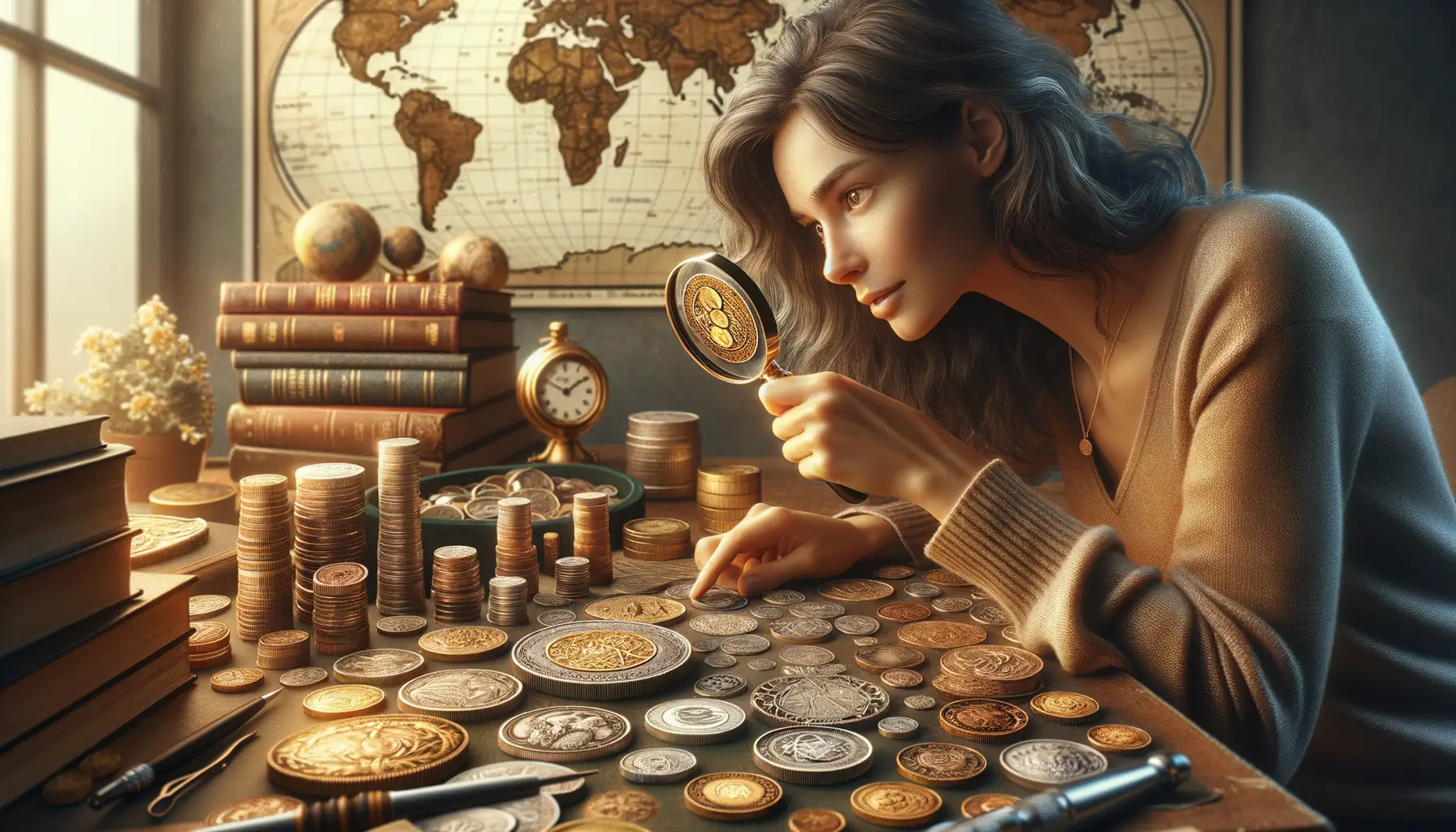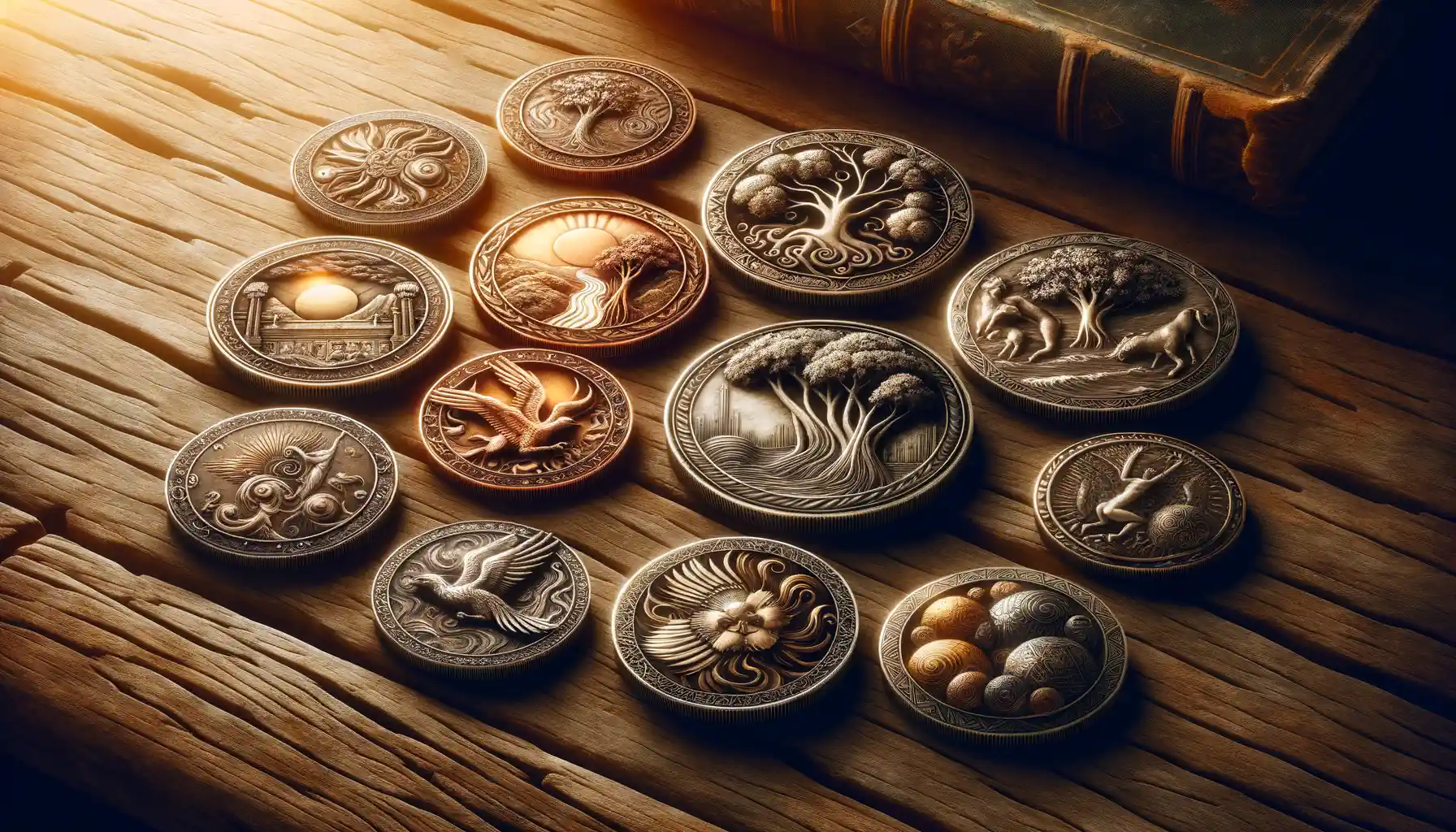The Historical Symbolism of Flowers in Design and Art
Flowers as Timeless Storytellers in Art
Have you ever thought about how a simple flower can tell a story? For centuries, artists and designers have turned to blossoms not just for their beauty but for their power to convey emotions and ideas. A rose, for instance, isn’t just a rose—it’s a whisper of love, or perhaps a lingering sorrow. The Victorians even had an entire “language of flowers,” where each petal spoke volumes.
In art and design, flowers became more than decoration—they were symbols of rebellion, celebration, and memory. Just think about the vibrant sunflowers Vincent van Gogh painted; they weren’t just botanical studies. They radiated warmth, hope, and maybe even his own restless intensity. Similarly, in ancient Persian rugs, intricate floral patterns symbolized paradise gardens, tangible escapes woven into everyday life.
- The lotus flower in Egyptian art embodies rebirth, rising above muddy waters into purity.
- Cherry blossoms in Japanese woodblock prints capture the fleeting beauty of life itself—poignant yet beautiful.
Through these designs, flowers transcend nature, becoming frames for human emotion and history, their fragile petals embedded with deep meaning. Don’t you feel their quiet magic when you look closer?
Flowers on Banknotes: Artistic and Cultural Significance
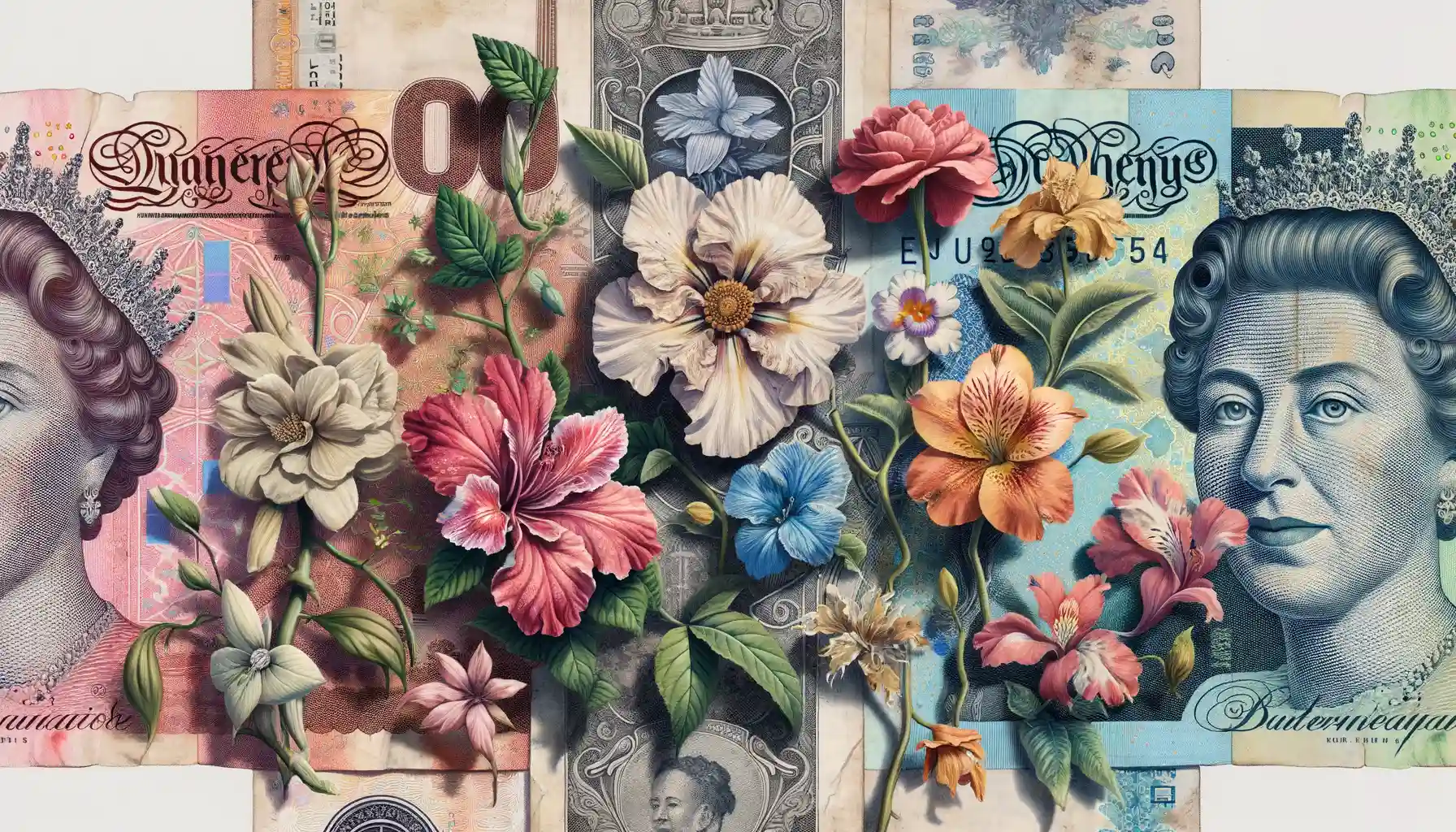
The Language of Flowers: Hidden Stories in Currency
Flowers on banknotes are more than decorative flourishes—they’re a silent, poetic language etched in the fabric of global economies. These blooms whisper stories of national pride, identity, and history. Picture this: the delicate petals of the edelweiss gracing a Swiss note, symbolizing rugged Alpine beauty and purity, or the regal lotus adorning Indian currency, a nod to spirituality and rebirth.
Every petal and stem holds cultural weight. Some flowers celebrate a country’s natural treasures, like the vibrant kiwi blossom on New Zealand’s bills, reminding us of its lush biodiversity. Others speak to resilience; take the poppy featured on Canadian money—a quiet homage to sacrifice and remembrance.
- The Japanese yen elegantly depicts cherry blossoms, embodying the fleeting yet beautiful passage of life.
- South Africa’s rand showcases the protea, a bold emblem of diversity and transformation.
What makes these floral additions so captivating is their ability to marry art with meaning. Each swirl and detail feels intentional, almost as if the artist pressed their own emotions into the ink. It’s a subtle but profound reminder that even the smallest design choices can weave an entire nation’s story.
Currency as an Artistic Medium: A Closer Look at Floral Representations
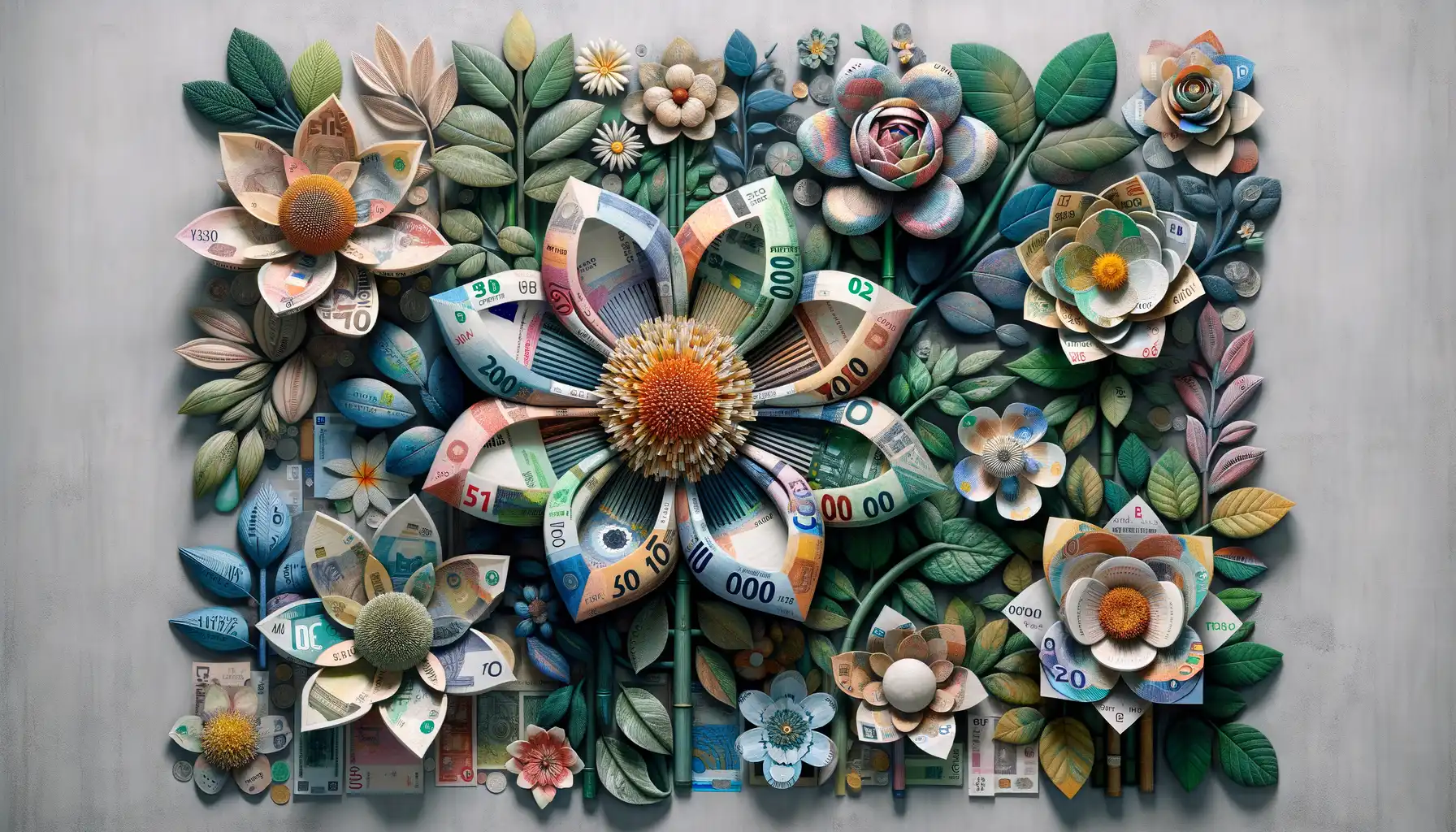
When Flowers Blossom on Banknotes
Money. A daily tool, yet so often overlooked as a canvas for art. But look closely—no, really closely—and you might see that many banknotes are a secret garden of sorts. Think of the delicate petals of a rose etched into paper currency or the bold silhouette of a tulip adorning coins. Why flowers, you ask? Because they speak a universal language of beauty and symbolism.
Some designs feel like love letters to nature, capturing every vein, curve, and shadow of a bloom. Others? They’re more abstract—a daisy becomes geometry, or a lotus transforms into a national emblem. Let’s not forget how these designs aren’t just pretty—they’re packed with meaning! Where one currency might feature the cherry blossom, symbolizing renewal in Japanese culture, another could proudly showcase the resilient edelweiss, beloved in Alpine nations.
- Think of the South African Rand: its striking King Protea reflects both biodiversity and national pride.
- Or the vintage French Franc, which often wove delicate floral borders around its intricate pastoral scenes.
Every flower, every petal, whispers a story—but you’ve got to lean in to hear it.
Intertwining Botany with Economy: The Role of Flowers in Money Aesthetics
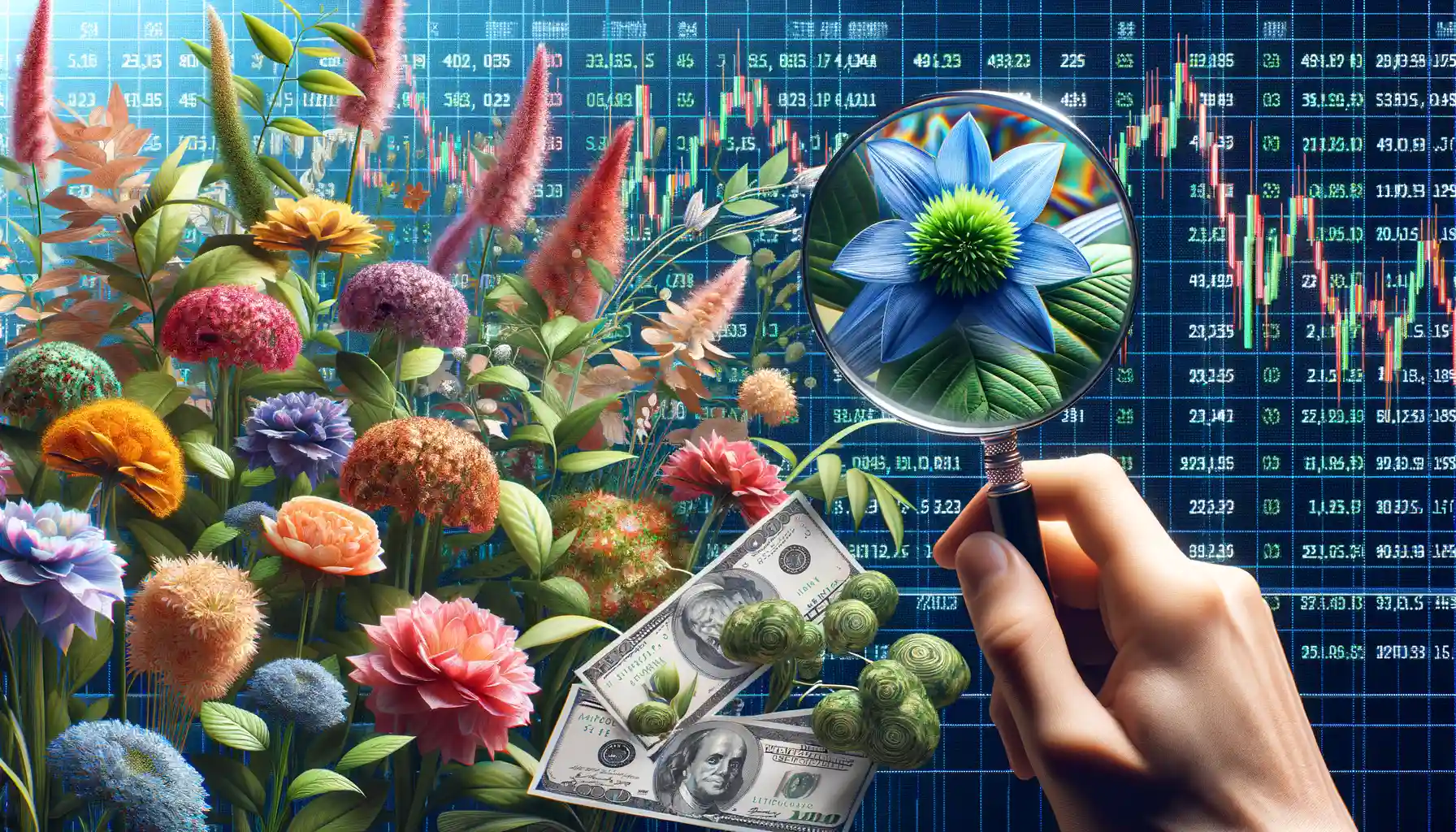
The Secret Language of Flowers in Currency
Have you ever stopped to wonder why a delicate bloom graces the surface of something as practical as money? It’s not just for decoration—far from it! Flowers, with their innate beauty and rich symbolism, inject a layer of poetry into the fabric of our economy. Think about the intricate petals of a lotus on an Indian rupee or the bold curves of a rose blooming across a Euro note. These are more than just artistic flourishes—they’re subtle storytellers.
Flowers on currency can symbolize growth, prosperity, or even national identity. Take, for instance:
- The cherry blossom on Japan’s yen—a soft nod to transient beauty and resilience.
- The sturdy maple leaf etched into Canadian coins, embodying a nation’s pride and endurance.
Each design is a quiet promise, a visual mantra of hope woven into the everyday transactions of life.
Where Nature Meets Precision
Creating floral designs for banknotes isn’t just a matter of sketching petals and vines. No, this is art that demands mathematical precision and ingenious techniques. Floral patterns are often used as anti-counterfeit measures. Why? Because the organic elegance of a sunflower’s spiral or a daisy’s symmetry is nearly impossible to replicate without advanced tools. Flowers are both beautiful and functional—a perfect marriage of form and purpose.
Currency adorned with blooms reminds us that economics isn’t all cold, hard numbers; it breathes, it grows, it inspires. Isn’t it fascinating how something as fragile as a flower becomes one of the most resilient symbols in the world?
Modern Interpretations: How Floral Designs Evolve in Contemporary Currency
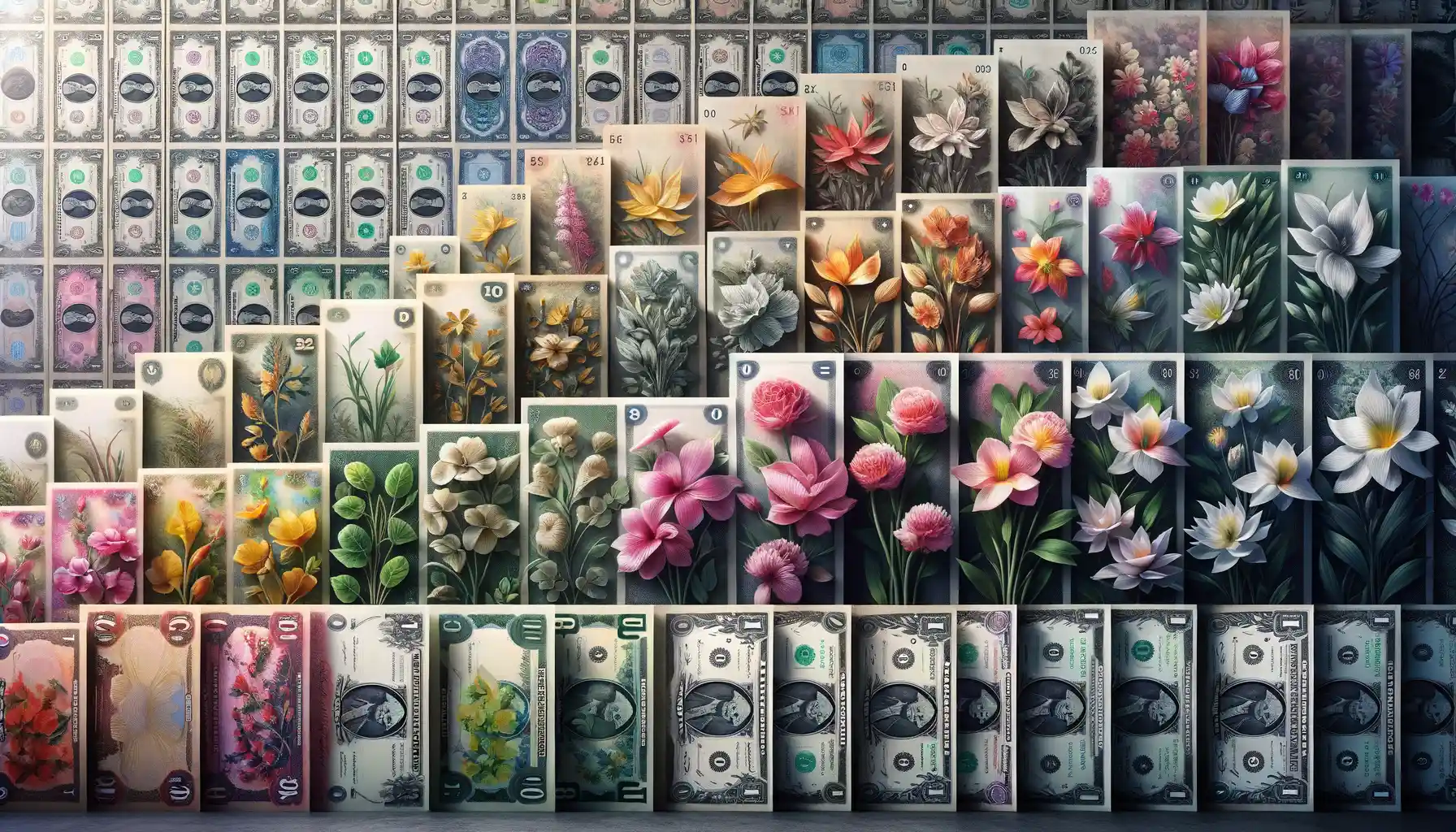
The Blossoming of Technology in Floral Currency Design
In today’s world, floral designs on currency are no longer confined to static patterns or simplistic outlines. Thanks to cutting-edge technology, flowers on money now pop with depth, texture, and even storytelling. Have you ever noticed how a banknote seems to shimmer subtly as you tilt it? That’s often due to intricate holographic layers, where floral motifs like the **lotus** or **rose** seem to “bloom” and glow.
Modern designers use tools like **micro-engraving** and **UV printing**, crafting petals so detailed that they almost fool your eyes into seeing real dew drops. And it’s not just about beauty. For example, Denmark’s 500 Krone features a delicate yet dynamic purple cow parsley—a tribute to natural diversity while incorporating anti-counterfeiting measures. A flower that safeguards an entire economy? Talk about multitasking!
- Holograms showcasing flowers that shift hues under different lighting.
- Raised printing techniques mimicking the velvet softness of petals.
- Embedded floral watermarks only visible when held to the light.
It’s as if currencies now double as miniature art galleries, offering tactile and visual experiences that feel more poetic than transactional.
From Tradition to Trend: A Global Floral Renaissance
Globally, floral designs on banknotes are being reinvented to reflect not just beauty but also identity. Take Canada’s $10 polymer note, for instance—its violet **lady’s slipper orchid** is more than just a pretty face; it symbolizes resilience, mirroring the nation’s rugged spirit. Similarly, Japan’s yen features **cherry blossoms**, embodying renewal and fleeting beauty, a nod to the cultural reverence for nature’s impermanence.
Beyond tradition, contemporary trends are blooming. Some countries showcase endangered flora to raise environmental awareness, like the **Edelweiss** on Switzerland’s notes. Others aim for inclusivity by blending native flowers with modern graphic styles, creating vibrant contrasts that draw attention from collectors and artists alike.
Flowers are no longer just decorative elements. They’re ambassadors of history, culture, and innovation—whispering stories of nations every time they pass hands.


